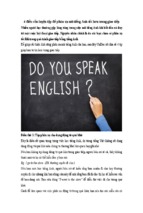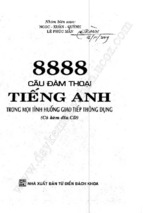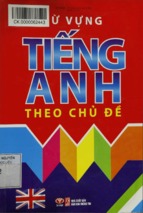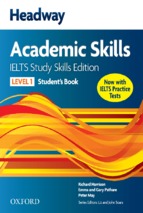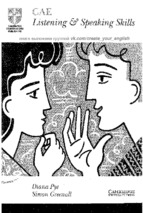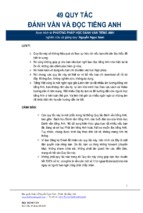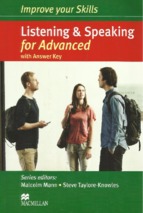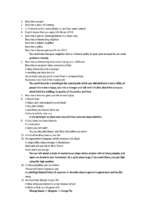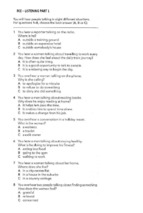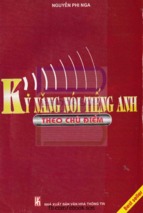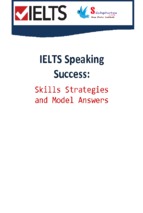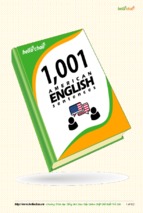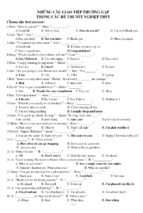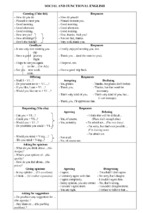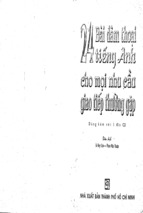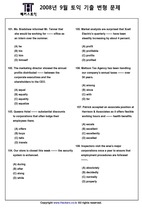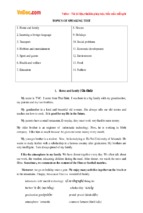Cambridge Certificate
in Advanced English
6
WITH ANSWERS
Examination papers from
University of Cambridge
ESOL Examinations:
English for Speakers of
Other Languages
CAMBRIDGE
UNIVERSITY PRESS
C,\\IBRIJ)('F 1':\JnRSITY I'RFSS
Cambridge, Nev. York, Melbourne, Madrid, Cape Town, Singapore, Sao Paulo
Cambridge Universirv Press
The Edinburgh Building, Cambridge CB2 2RU, UK
www.c.unbr idge.org
Information on this title: www.cambridge.org/978052 [6137.36
© Cambridge Universirv Press 2005
It is normally ncccssarv for written permission for copying to be obtained in advance from
a publisher. The candidate answer sheets at the back of this book are designed to be
copied and distributed in class. The normal requirements are waived here and it is not
necessary to write to Cambridge University Press for permission for an individual teacher
to make copies for usc within his or her own classroom. Only those pages which carry the
wording '© UCI.ES 2005 Photocopiahle" may be copied.
First published 2005
Reprinted 2006
Printed in the United Kingdom at the University Press, Cambridge
A
CLllcz/ugll!'
[SB~-13
[SB~-[O
record [or this publication is auailable from the British librarv
978-0-52 [-6 1372-9 Student's Book
0-52[-61.372-8 Student's Book
ISB1\'- [3 ')78-0-521-61373-6 Student's Book with answers
ISBI\i- [0 0-521-613 73-6 Student's Book with answers
ISB1\'- 13 978-0-521-613 76-7 Cassette Set
ISBN- to 0-52 [-6 1376-0 Cassette Set
[SBN-13 978-0-52[-61377-4 Audio CD Set
ISBN-[O 0-521-61377-9 Audio CD Set
ISBN- 13 978-0-521-61.374-.3 Self-srudv Pack
ISBN - [ 0 0-52 [ -6 I .3 74-4 Self-srudv Pack
2
Contents
Thanks and acknowledgements
Introd uction
Test 1
Test 2
Test 3
Test 4
5
Paper
Paper
Paper
Paper
Paper
1
2
3
4
5
Reading
8
Writing
17
English in Use
Listening
29
Speaking
34
20
Paper
Paper
Paper
Paper
Paper
1
2
3
4
5
Reading
36
Writing
45
English in Use
Listening
57
Speaking
62
48
Paper
Paper
Paper
Paper
Paper
1
2
3
4
5
Reading
64
Writing
73
English in Use
Listening
85
Speaking
90
76
Paper
Paper
Paper
Paper
Paper
1
2
3
4
5
Reading
92
Writing
101
English in Use
104
Listening
113
Speaking
118
Visual materials for Paper 5
Test 1
Test 2
Test 3
Test 4
Paper
Paper
Paper
Paper
5
5
5
5
frames
frames
frames
frames
Key
Key
Key
Key
and
and
and
and
transcript
transcript
transcript
transcript
colour section
119
122
125
128
131
Marks and results
Test 1
Test 2
Test 3
Test 4
4
143
153
163
173
Sample answer sheets
183
,
,)
Thanks and acknowledgements
The publishers are grateful to the following for permission to use copyright material. Whilst every effort has
been made to locate the owners of the copyright, in some cases this has been unsuccessful. The publishers
apologise for any infringement or failure to acknowledge the original sources and will be glad to include any
necessary correction in subsequent printings.
The fllde/JelldClzt for the extract on pp.lO-ll from 'How I built the boat of rnv dreams' bv Tom Cunliffe, and
for the adapted cuticle on pAO from 'The Tartan Machine' by Sally Varlow CD Independent l'\ews &: \Iedia
(UK) Ltd, 1999; The Sundav Telcgrapb for the text on pp.15-16 from 'Departure Points' bv Tim Pozzi CD
Telegraph Croup Limited, 1 November 19n; BBe Wildlife Mdg,nine for the adapted extracts on p.3 from
'Natural Classic' book reviews CD Origin Publishing Ltd, The Times for the adapted text on p.38-39 from 'In
search of true north' bv Anjana Ahuja CD Times Newspapers Ltd, 1997; for the extract on p. 65 from \Vorking
with t.niotionat l nt clligcnrc bv Daniel Goleman, CD 1998 by Daniel Golcman. Used bv permission of Bantam
Books, a division of Random House and Bloomsbury Publishing Pic; The Tclcgrapb for the extract on p.66-67
from 'Beginner takes all' bv Serena Allorr CD Telegraph Group Limited, 1998; Georgina Ferrv for the adapted
text on pp.71-72 from 'Dororhv Who?', published in The Financial Times, 5/6 December 19')8; Roger BrelY
for the extract on pp.94-95 adapted from 'Where the landscape will do the walking' published in The
Financial Times, 1999.
For permission to reproduce copyright photographs:
C I: CD Keren Su/Corbis, centre; CD Peter Turnley/Corbis, bottom right; Photos for
Books/photographersdirecr.com, top right; Image Source/Rex Features, top lett; Peter Frischmuth/Still Pictures,
hottoni lett.
C2: TopfotolThe Image Works, top left; Hugh Penney Photography/photographersdirecr.com, t o]: right; Getty
Images, bottom lett 0' right;
C3: CD Garv Houlder/Corbis, top; CD Michael S. Yamashita/Corbis, centre; Cerrv Images, bottom,
C4: CD Little Blue \'Volf Productions/Corbis, bottom left; Kayte Deioma/photographersdirecr.com, top; Cettv
Images, centre left 0" bottom right; Brad Mitchell Photography/photographersdirecr.com, centre right.
C5: CD Jonathan Blair/Corbis, top; Topforo, bottom.
C7: CD Rovaltv Free/Corbis, centre right; Education Photos/John Walmslev, bottom right; Gem Images, to]: C'"
centre left; Topfoto/The Image Works, bottom left.
C8: CD Royalrv Frec/Corbis, top; Empics/SportsChrome, bottom,
C9: Leslie Garland Picture l.ibrarv/Alamv, top left; Chris Howes/Wild Places Phorographv/Alamy, bottom
right; Fmpics/Al', top right; Volvox/Robert Harding Picture Library, centre lett; Rex Features, bottont left.
C 10: CD Robert Holmcs/Corbis, top; Getty Images, bottom.
C 12: Photograph bv James Vevsey/Camera Press London, lower centre; Cettv Images, upper centre:
Imagestate, bottom: Rob van Nostrand, PerfectPhoto, CA/photographersdirecr.com, top.
C 13: CD John Angerson, hottom left 6 right; Seandrakes/photographersdirecr.com, top right;
Jacky Cha pman/Phototusion/phorogra phersdircct.com, top left.
C 14: Photograph by James Vevsev/Carnera Press London, upper centre; Ccn v Images, lower centre;
Imagesrarc, top; Rob van Nostrand, PerfectPhoto, CA/photographersdirecr.com, bottom,
CIS: A I PIX/GrandAngleFoto/photographersdirect.com, top left; Empics/AI', centre right c: liottcon left; EOI'
Pics/K.Tovell/Rex Features, centre left; TopfotolThe Image Works, top right 0' bottom right.
C 16: CD John Angerson, top left 6 right; Seandrakes/photographersdirecr.com, bottom lett: jackv
Cha pman/Photofusion/photogra phersdircct.corn, bottom right.
Artwork: Servis Filmsetting Limited
Picture research by Sandie Huskinson-Rolfe of PHOTOSEEKERS
Design concept by Peter Ducker
Cover design by Dunne &: Scully
The recordings which accompany this book were made at Studio AVP, London.
4
Introduction
This collection of four complete practice tests comprises past papers from the University of
Cambridge ESOL Examinations Certificate in Advanced English (CAE) examination; students
can practise these tests on their own or with the help of a teacher.
The CAE examination is part of a group of examinations developed by Cambridge ESOL
called the Cambridge Main Suite. The Main Suite consists of five examinations that have similar
characteristics but are designed for different levels of English language ability. Within the five
levels, CAE is at Level Cl in the Council of Europe's Common European Framework of
Reference for Languages: Learning, teaching, assessment. It has also been accredited by the
Qualifications and Curriculum Authority in the UK as a Level 2 ESOL certificate in the National
Qualifications Framework. The CAE examination is widely recognised in commerce and
industry and in individual university faculties and other educational institutions.
Examination
Council of Europe
Framework Level
UK National
Qualifications
Framework Level
C2
3
CPE
Certificate of Proficiency
in English
CAE
Certificate in
Advanced English
2
FCE
First Certificate in English
B2
PET
Preliminary English Test
B1
Entrv
KET
Key English Test
A2
Enrrv 2
1
,
.J
Further information
The information contained in this practice book is designed to be an overview of the exam. For
a full descri prion of all of the above exams including information about task types, testing
focus and preparation, please see the relevant handbooks which can be obtained from
Cambridge ESOL at the address below or from the website at: www.CambridgeESOLorg
University of Cambridge ESOL Examinations
1 Hills Road
Cambridge CB 1 2EU
United Kingdom
Telephone: +44 1223 553355
Fax: +44 1223460278
e-mail:
[email protected]
5
Introduction
The structure of CAE: an overview
The CAE examination consists of five papers.
Paper 1 Reading 1 hour 15 minutes
This paper consists of four parts, each containing one text or several shorter pieces. There are
between 40 and 50 multiple-matching, multiple-choice and gapped-text questions in total.
Paper 2 Writing 2 hours
This paper consists of two parts and candidates have to complete two tasks (letters, reports,
articles, competition entries, proposals, reviews and leaflets) of approximately 250 words each.
Part 1 consists of one compulsory task based on substantial reading input. Part 2 consists of
one task selected from a choice of four. Question 5 is always related to business.
Paper 3 English in Use 1 hour 30 minutes
This paper consists of six parts, designed to test the ability to apply knowledge of the language
system, including vocabulary, grammar, spelling and punctuation, word-building, register and
cohesion. It contains 80 items in total.
Paper 4 Listening 45 minutes (approximately)
This paper consists of four parts, each with texts of varying length and nature which test a
wide range of listening skills. There are between 30 and 40 sentence completion, note
completion, multiple-choice and multiple-matching questions in total. Parts 1, 3 and 4 are
heard twice whereas Part 2 is heard only once.
Paper S Speaking 15 minutes
This paper consists of four parts, based on visual stimuli and verbal prompts. Candidates are
examined in pairs by two examiners, one taking the part of the interlocutor and the other of the
assessor.
Candidates are assessed individually. The assessor focuses on grammar and vocabulary,
discourse management, pronunciation, and interactive communication. The interlocutor
provides a global mark for the whole test.
Grading
The overall CAE grade is based on the total score gained in all five papers. It is not necessary
to achieve a satisfactory level in all five papers in order to pass the examination. Certificates
are given to candidates who pass the examination with grade A, B or c:. A is the highest. The
minimum successful performance in order to achieve grade C corresponds to about 60°/r, of the
total marks. D and E are failing grades. All candidates are sent a Statement of Results which
includes a graphical profile of their performance in each paper and shows their relative
performance in each one. Each paper is weighted to 40 marks. Therefore, the five CAE papers
total 200 marks, after weighting.
For further information on grading and results, go to the website (see page 5).
6
Test 1
Test 1
PAPER 1
READING (1 hour 15 minutes)
Part 1
Answer questions 1-16 by referring to the newspaper article about clock radios on page 9. Indicate
your answers on the separate answer sheet.
For questions 1-16, answer by choosing from the sections of the article (A-E) on page 9.
Some of the choices may be required more than once.
In which section are the following mentioned?
8
a tester admitting that he did not trust any type of alarm clock
1
.
a tester later regretting having touched the controls
2
.
a tester approving of a model because of its conspicuous appearance
3
.
the testers being able to operate the model without reference to the manual
4
..
a tester's praise for a model despite the existence of a technical fault
5
.
doubts about the reliability of a model because of the design of an
additional feature
6
.
the testers feeling positive about their success in getting the model to work
7
..
doubts about whether anyone would wish to follow certain instructions from
the manual
8
.
an explanation of why companies had started to make better radios
9
.
the intended market for the model being apparent from its design
10
.
a tester realising that he had drawn the wrong conclusion about a
particular feature
11
.
the testers agreeing on the usefulness of a particular feature
12
.
an additional feature which made the price seem competitive
13
.
uncertainty over whether the radio controls had been set in the
correct sequence
14
.
a tester's reaction to the imprecision of the alarm
15
.
surprise at the commercial success of a particular model
16
.
Paper 1 Reading
SOUND THE ALARM
Stuart Harris reports
Many of us listen to the radio when we get up in the morning and most of us also require some external
means to persuade us to get out of bed. Thus we have the clock radio. But how do you pick a good one?
Our panel, which consisted of myself plus the inventor Tom Granger and the broadcaster Paul Bridges,
tested five currently available.
A
The 'dual alarm function' that is advertised with this
model does not allow you, as I first supposed, to be
woken by the buzzer, snooze a while and then finally
be driven out of bed. The instruction booklet advises
you to use this function to set two different wake-up
times, one for work days and one for weekends, but
whose life is programmed to this extent?
Since this model costs more or less the same as the
second model tested, the inclusion of a cassette player
is quite a bargain - you can fall asleep to your own
soothing tapes and wake up to a day without news. We
all thought the quality of the radio excellent, too - if only
the whole thing was smaller. It's as big as a rugby ball.
Paul Bridges said, 'Any clock radio I buy has to leave
enough space on the bedside table for my keys, wallet,
glasses and telephone. Anyway, I'm completely
paranoid and always book a wake-up call in case the
alarm doesn't go off.'
B
This model was voted best in the beauty stakes and
overall winner. Paul Bridges declared himself 'in love
with it', although the clock on the one he tested 'kept
getting stuck at 16.00'. I was fascinated by the digital
display, with its classy grey numbers on a gentle green
background. The wide snooze bar means you can tap it
on the edge with your eyes shut. Unfortunately, the
smooth undulations and tactile buttons, like pebbles on
the beach, encouraged me to run my fingers over them
as if they were keys on a piano, which proved my
undoing when I finally looked at the SO-page instruction
booklet.
The clock has a self-power back-up so you don't
have to reset it if someone unceremoniously pulls the
plug out in order to use a hairdryer or the vacuum
cleaner; this met with unanimous approval. However,
we all found it a technical feat to set up - though
completing the learning curve made us feel 'cool' and
sophisticated.
C
Tom Granger described this model with its extra builtin lamp as 'unbelievably tacky' in the way it's made.
'You have to wrench the funny light out of its socket to
get it to work, which makes me wonder about the
quality of the rest of it.' He complained that he had to
read the instruction booklet twice before he could get it
to work; the clock kept leaping from 12.00 to 02.00 so
he had to go round again.
The light was certainly hard to position; you would
never be able to read by it - it only shines on the clock,
which is illuminated anyway. Paul Bridges said he was
'very tickled' by the lamp idea but agreed that the radio
was hard to tune. The buzzer is reminiscent of 'action
stations' on a submarine and made me feel like hurling
the whole thing across the bedroom. Interestingly,
however, this model is the third most popular on the
market.
D
Clearly aimed at young people, with its brightly
coloured casing and matching bootlace strap, this one
appealed to the child in Tom Granger and me. 'I would
choose this one because it doesn't disappear into the
background like the others,' he said. In fact, the
traditional design of the controls made it the only one
we managed to set up without reading the instruction
booklet. Too bad the alarm is allowed a hilarious 20minute margin for error; the manual notes, 'the alarm
may sound about 10 minutes earlier or later than the
pre-set time'. Paul Bridges scoffed at such a notion,
adding that this model was 'terribly fiddly' and, indeed,
'completely useless'.
E
The simplest and cheapest of all the models tested, this
scored points with Tom Granger because it 'seemed
very standard and took up little space', but also
because it has old-fashioned dial tuning. 'It's more
intuitive to set up. With modern push-button tuning
you're never really sure if you've pressed all the
buttons in the right order so you can't have confidence
that the thing will actually work.' He accepted, however,
that manufacturers had been obliged to improve the
quality of radios because of the advent of button-tuning.
I thought the tuning rather crude, as did Paul Bridges,
but we agreed that the radio quality was fine. The
buzzer on this model certainly works; it succeeded in
getting me out of bed in just two beeps!
9
Test 1
Part 2
For questions 17-22, you must choose which of the paragraphs A-G on page 11 fit into the
numbered gaps in the following magazine article. There is one extra paragraph which does not fit
in any of the gaps. Indicate your answers on the separate answer sheet.
THE BOAT OF MY DREAMS
The best boat design should combine old and new, says Tom Cunliffe. And he put it into practice
in his own craft, 'The Westerman'.
This week. the Summer Boat Show in London
is resplendent with fine yachts, bristling with
new technology. Nearly all are descendants
of the hull-shape revolution that took place
25 years ago. By contrast, my own lies
quietly on a tidal creek off the south coast.
She was designed last year but, seeing her,
you might imagine her to be 100 years old
and think that her owner must be some kind
of lost-soul romantic.
1~7
_--I
It has to be said, however, that despite being
an indispensable tool in current design
methods
and
boat-building
practice,
sophisticated
technology
frequently
insulates crews from the harsh realities of
maritime life. These are often the very
realities they hoped to rediscover by going
to sea in the first place.
~
_ _ . __
.
...
-_.
~
The occasional battle with flapping canvas is
surely part of a seaman's life. And for what
purpose should we abandon common sense
and move our steering positions from the
security of the aft end to some vulnerable
perch half-way to the bow? The sad answer is
that this creates a cabin like that of an ocean
liner, with space for a bed larger than the one
at home.
10
Her sails were heavy, and she had no pumped
water, no electricity to speak of, no fridge, no
central heating, no winches, and absolutely
no electronics, especially in the navigation
department, yet she was the kindest, easiest
boat that I have ever sailed at sea.
The Westerman has never disappointed me.
Although Nigel Irens, the designer, and Ed
Burnett, his right-hand man, are adept with
computer-assisted design programs, Irens
initially drew this boat on a paper napkin,
and only later transferred his ideas to the
computer. After this had generated a set of
lines, he carved a model, just as boatyards
did in the days of sail. Together we
considered the primary embryonic vessel,
then fed the design back into the electronic
box for modification.
Her appearance is ageless, her motion at sea
is a pleasure and her accommodation, much
of it in reclaimed pitch pine, emanates an
atmosphere of deep peace. Maybe this is
because she was drawn purely as a sailing
craft, without reference to any furniture we
might put into her. That is the well-tried
method of the sea.
Paper 1 Reading
~~-
J
Constructed in timber treated with a
penetrating glue, she is totally impervious to
water. Thus she has all the benefits of a glass
fibre boat yet looks like, feels like and sails
like the real thing.
A It's not that I'm suggesting that sailors
should go back to enduring every
hardship. It's always been important to
me that my boats have a coal stove for
warmth and dryness and cosy berths for
sleeping. But why go cruising at all if
every sail sets and furls itself?
E
At the same time, having lived aboard an
ancient wooden beauty in the early
seventies, it's easier to understand more
of this area of the mechanics. My
designer, for example, knows more about
the ways of a boat on the sea than
anyone I can think of.
B Back on land, however, it is a sad fact
that the very antiquity of classic boats
means that they need a lot of looking
after. When I had a bad injury to my
back, I realised that my IS-year love affair
with her had to end. Searching for a
younger replacement produced no
credible contenders, so I decided to build
a new boat from scratch.
F
Perhaps I am, though I doubt it. This boat
has benefited from all the magic of oldfashioned boat design, but it would have
been a much harder job without the
advances of modern know-how.
C In her timeless serenity, she is the living
proof that it works; that there is no need
to follow current fashions to find
satisfaction. and that sometimes it pays
to listen to the lessons of history.
G For me a boat should always be a boat
and not a cottage on the water. When I
bought an earlier boat, Hirta, in which I
circumnavigated Britain for a TV race
series, the previous owner observed that
she had every comfort, but no luxury.
During my long relationship with her,
Hirta taught me how wise he was.
D The next version was nearly right and by
the time the final one appeared, the form
was perfect. The completed boat has now
crossed the North Atlantic and has won
four out of her first six racing starts,
II
,,"ew horizons: Tom Cunliffe on board 'The Westerman'
Test 1
Part 3
Read the following magazine article and answer questions 23-27 on page 13. On your answer
sheet, indicate the letter A, B, C or D against the number of each question, 23-27. Give only one
answer to each question.
Margaret and her liquid assets
.\1algaret rr'illeitts is said to 11l11'e ,I 'sixth sense', Sill' call IlOld a [oilecd ita.zc! rod ahoi« The .\Zrolllld
and detect water. She is illacasilli
- Xem thêm -

